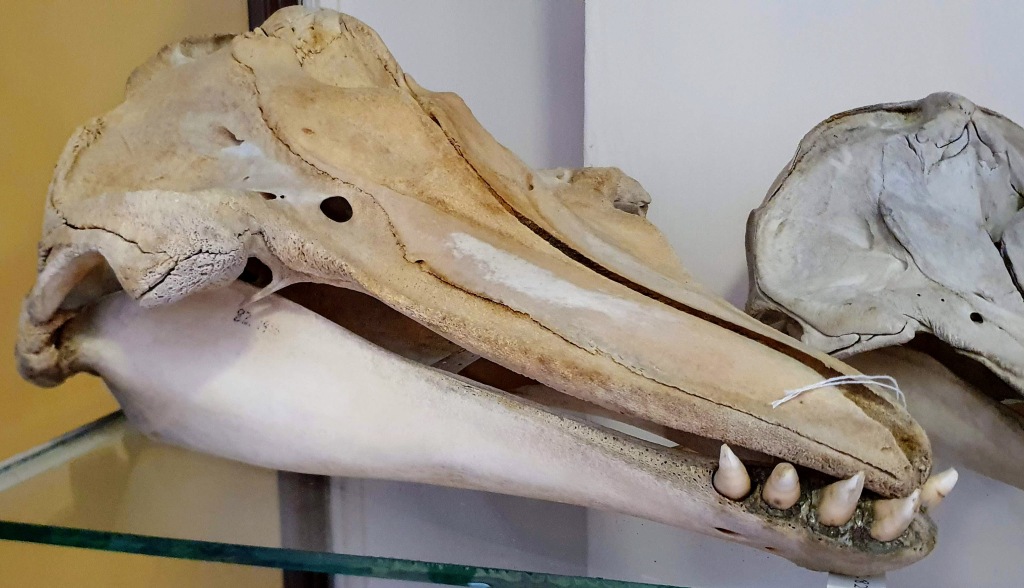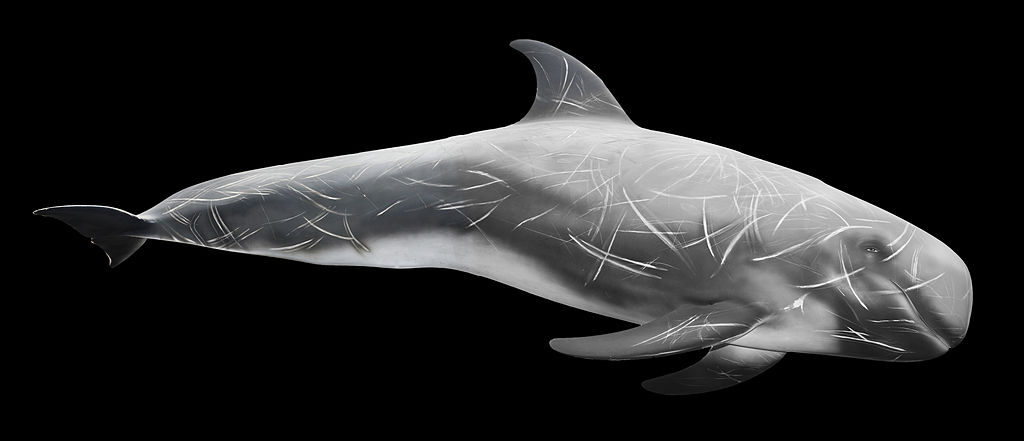Last week I gave you this toothy specimen from the Dead Zoo to have a go at identifying:

Everyone spotted that this is the skull of a toothed whale (or large dolphin), but after that, things got a little bit more confusing. In particular, the arrangement of the four pairs of teeth in only the front section of the lower jaw, seems to have thrown a lot people off.
There were several suggestions of Beluga whale, but they have around 40 teeth between the upper and lower jaws and clearly this doesn’t (and even if teeth had fallen out, you’d expect to see some empty sockets in the mandible). There were also suggestions of Narwhal, but they have a maximum of 4 teeth only in the upper jaw and one – or very occasionally two – form the Narwhal’s unmistakeable tusk(s). This is neither a Beluga whale nor a Narwhal.
However, the similarity of this skull to these two species did lead to speculation about whether this might be a hybrid between Beluga and Narwhal – one of the infamous Narlugas (or more accurately Belwhals). Ed Yong wrote about these real, but very rare, animals in the Atlantic a couple of years ago and I recommend having a read. If you do, you’ll discover that only one specimen is known and this is most definitely not it. As disappointing as this will no doubt be for some, we live in a world where hopes and dreams are routinely dashed against the rocks of reality, so let’s get ready to rock.
There are around 30 species of Oceanic dolphin, ranging in size from 50kg to 10,000kg. You can see that this one is a bit bigger than the specimen next to it and it has much broader and more chunky ‘cheeks’ (for want of a better term). This is something I normaly associate with the bigger dolphins that are usually referred to as whales – things like Pilot whales, Killer whales and the species in the Monodontidae that I mentioned earlier.
Most of the Delphinoidea have a lot of teeth to assist with prey capture, but this mystery object has got creative with just 4 pairs in the lower jaw (although obviously not as creative as the Narwhal). This limits the possibilities significantly, since it’s a fairly unusual condition. The other type of whales that only have a small number of teeth in just the lower jaw are the beaked whales, which primarily feed on soft-bodied cephalopods and have repurposed their teeth for competition. The mystery species has, perhaps unsurprisingly, done the very same. So, we’re left with the question of which of the bigger dolphins feeds on cephalopods and has an unusual arrangement of teeth?
The answer, as Adam Yates was the first to share, is the Grampus or Risso’s Dolphin Grampus griseus (G. Cuvier, 1812). They have between 7 and 2 pairs of teeth in their lower jaw and none in the upper. The live animals are quite heavily scarred from their interactions with those teeth.
Stay tuned for another mystery object next week!


Wow. Thanks.
And thanks for the word on the ecological & ethological similarities between Beaked Whales (similar, perhaps, in some of these respects, to Physeter!) and Risso’s Dolphin: helps me make sense of this!